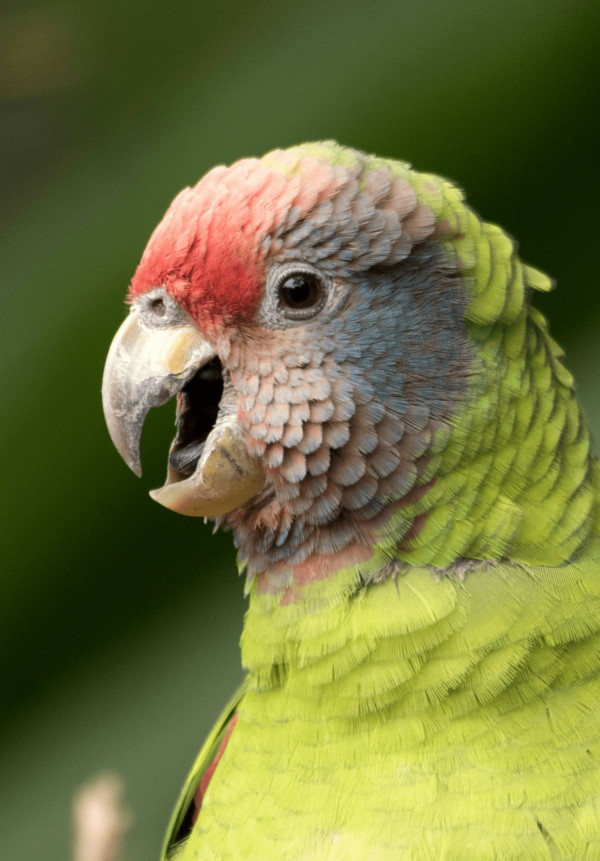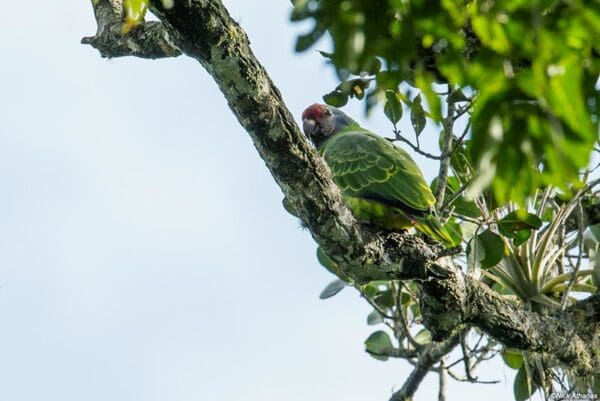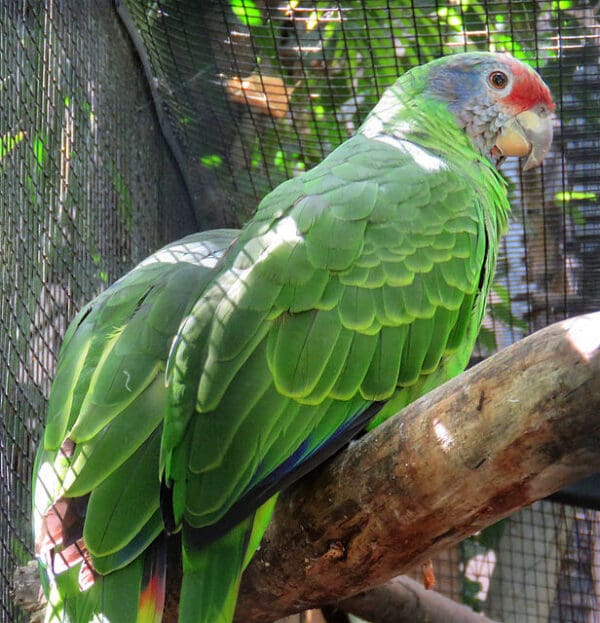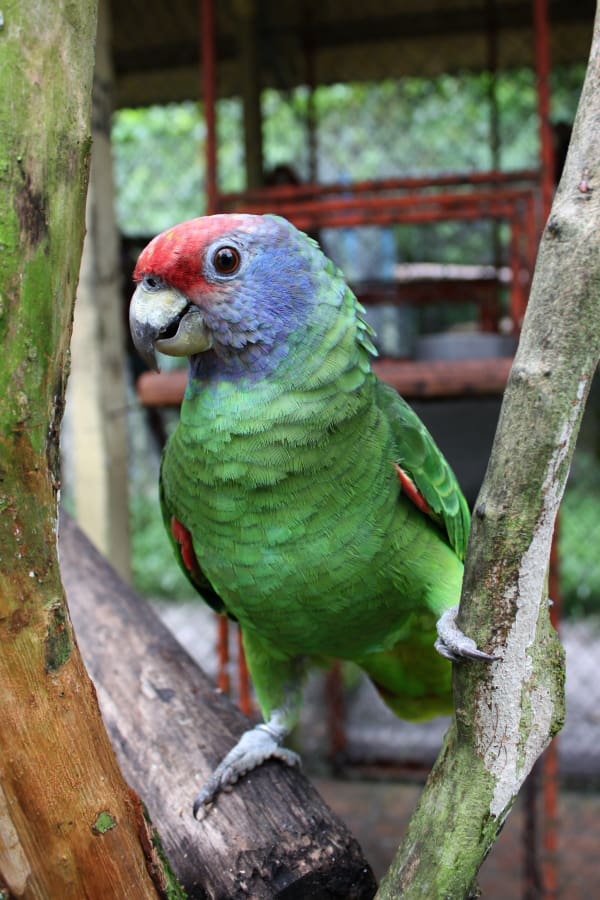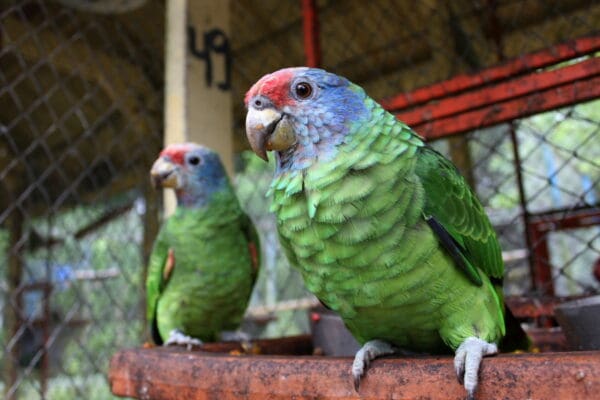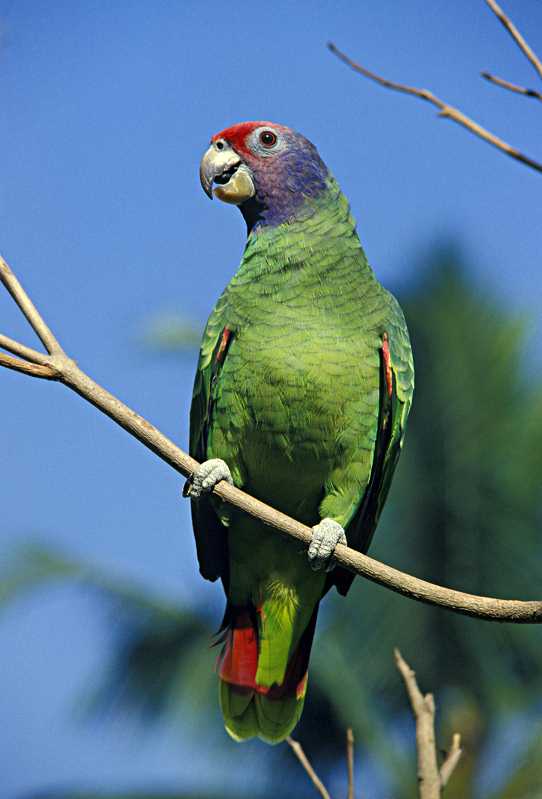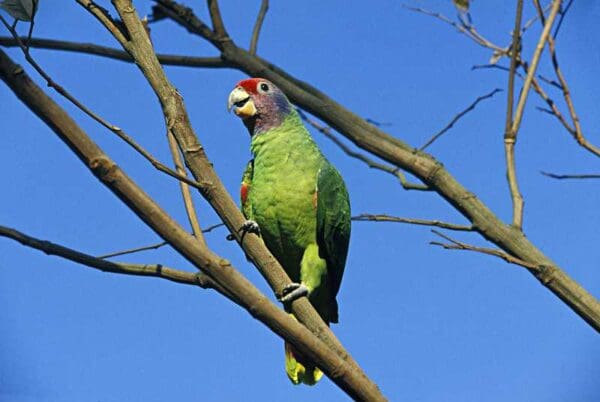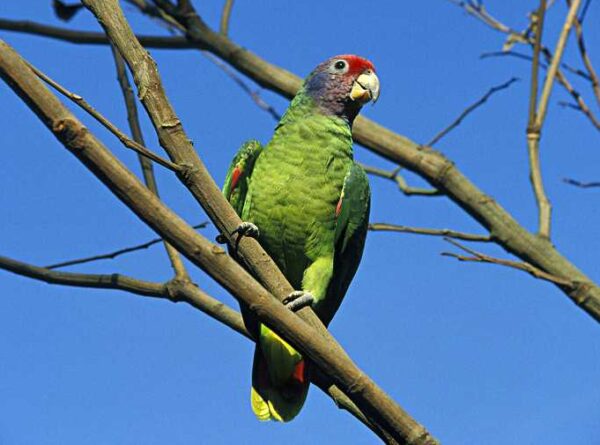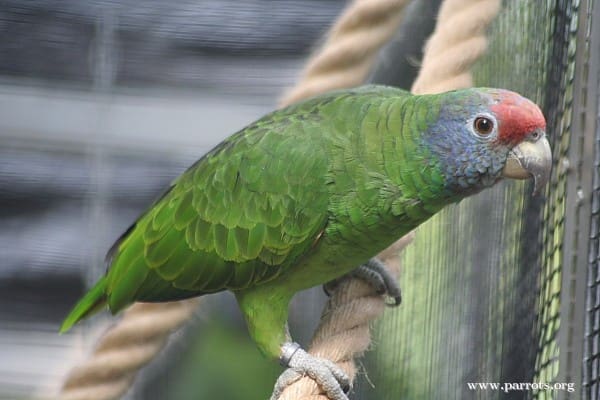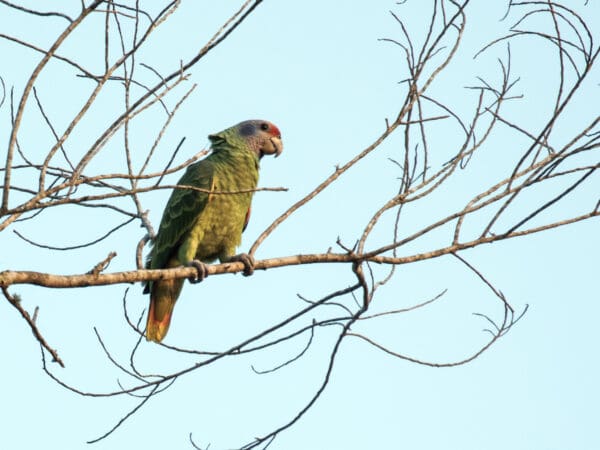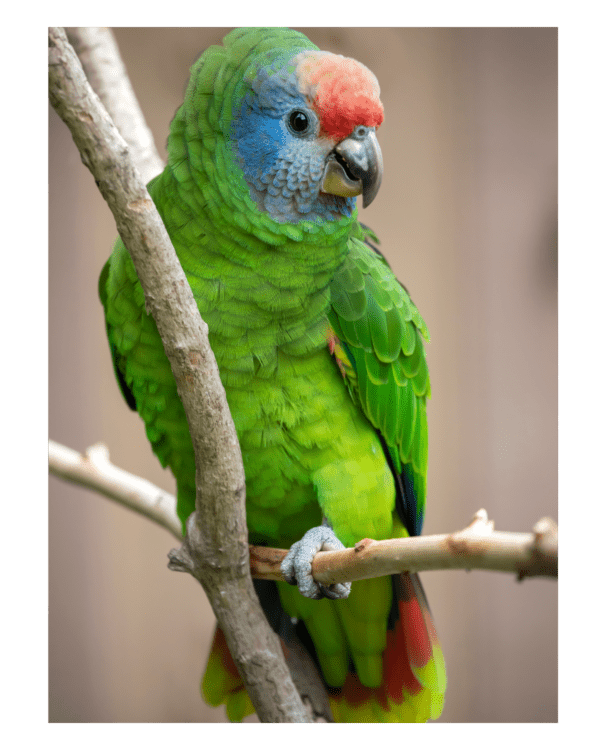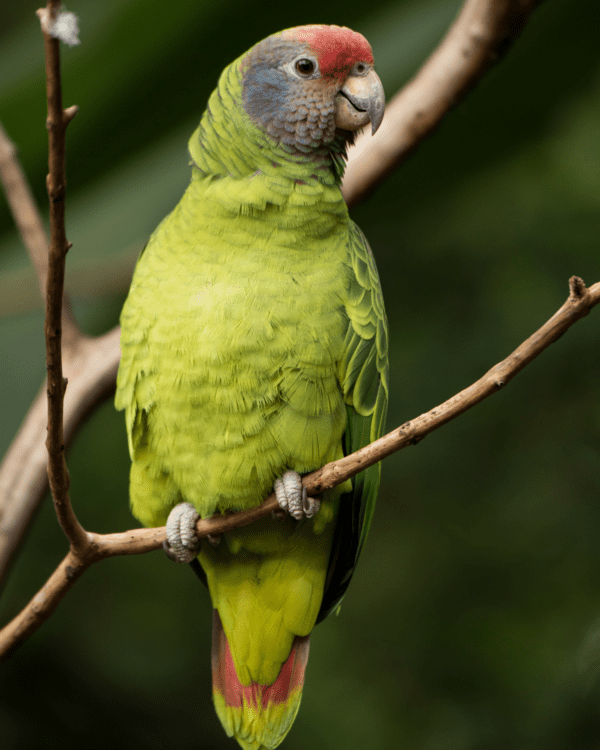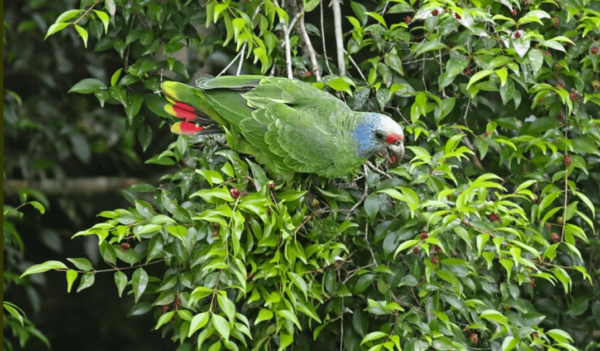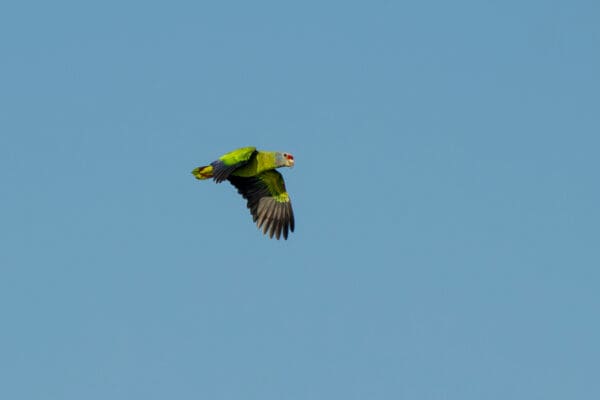Red-tailed Amazon
Also known as:
Purple-faced Parrot, Blue-faced Amazon (Parrot), Brazilian Green Amazon Parrot
Also known as:
Purple-faced Parrot, Blue-faced Amazon (Parrot), Brazilian Green Amazon Parrot
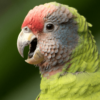
![© Nick Athanas [CC BY-SA 2.0] via Flickr A wild Red-tailed Amazon perches on a limb](https://parrots.org/wp-content/uploads/2023/01/wpt_Red-tailed-Amazon_1122-19-100x100.jpg)
![© Florin Feneru [CC BY-SA 2.0] via Flickr](https://parrots.org/wp-content/uploads/2023/01/wpt_Red-tailed-Amazon_1122-18-100x100.jpg)
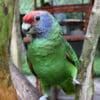
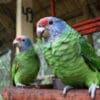


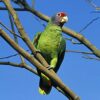
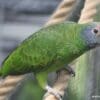
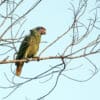
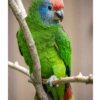
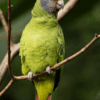
![© Brendan Ryan [CC BY-SA 2.0] via Flickr A wild Red-tailed Amazon feeds in a tree](https://parrots.org/wp-content/uploads/2023/01/Red-tailed-Amazon-e1732734419446-100x100.png)
![© Brendan Ryan [CC BY-SA 2.0] via Flickr](https://parrots.org/wp-content/uploads/2023/01/wpt_Red-tailed-Amazon_1122-17-100x100.jpg)
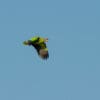
DID YOU KNOW?
The Red-tailed Amazon will occasionally take invertebrates (insects, pupae) as food.

Amazona

brasiliensis
Size:
37 cm (14.4 in)
Weight:
430 g (15 oz)
Subspecies including nominate:
one
Colour Adult:
Both adults green in colour, grey edging feathers of neck to area of mantle; red forehead and lores, turning to rose/red on crown and occiput where a few feathers are tipped with purple; pink/blue chin, cheeks and ear coverts to sides of neck, the feathers edged with dull lilac; red carpal edge; centre tail feathers green, widely tipped with yellow/green, the side tail feathers widely tipped with green/yellow and banded with red near end, outer three feathers deep purple/blue at bases of outer webs. Beak dull yellow with grey near tip of upper mandible. Eye ring pale grey. Eye orange.
Colour Juvenile:
As in adult but with duller head colours; forehead to occiput pale pink/red; pink/mauve chin and cheeks, turning to grey/blue on ear coverts to sides of neck. Beak yellow with grey/brown at tip of upper mandible. Eye ring paler grey, eye brown.
Call:
Calls similar to Blue-fronted Amazon (Amazona aestiva): musical growls and high-pitched sounds.
More Information:
Content Sources:
CITES
Avibase
BirdLife International
Cornell Lab of Ornithology/Birds of the World
Parrots: A Guide to Parrots of the World, Juniper and Parr, 1998
Parrots: Status Survey and Conservation Plan 2000-2004, Snyder, McGowan, Gilardi and Grajal, 2000.
Parrots of the World, Forshaw and Cooper, 1977. 2012 edition
Parrots of the World, Forshaw, 2006.
Parrots in Aviculture, Low, 1992.
Psittacine Aviculture, Schubot, Clubb and Clubb, 1992.
Captive Status:
Rare
Longevity:
—
Housing:
Aviary or suspended enclosure, minimum length 3 m (9.8 ft).
Diet:
Fruit such as: apple, pear, orange, banana, cactus fruits, pomegranate, forming about 30 % of the diet; fresh vegetables such as: carrot, celery, green peas, beans, fresh corn, green leaves; spray millet and limited mixed seed, cooked beans and pulses, complete kibble.
Enrichment:
—
Nest Box Size:
12″ x 12″ x 24″ (30.5 cm x 30.5 cm x 61 cm) vertical box.
Clutch Size:
3 to 4
Fledging Age:
Around 8 weeks.
Hatch Weight:
—
Peak Weight:
—
Weaning Weight:
—
World Population:
6000-6700 mature individuals, slowly increasing.
IUCN Red List Status:
Near Threatened
CITES Listing:
Appendix I
Threat Summary:
Restricted-range species. Thanks to recent conservation efforts the population has seen an increase. Has been heavily affected by local bird trade, sport hunting and deforestation for banana plantations, grazing and beach houses in coastal areas. The species is present inside several protected areas, but poaching persists in many of them.
Range:
SE coast of Brazil, near São Paulo and Paraná.
Habitat:
Restricted area of lowland forest on coast, and wetlands such as freshwater swamps, humid forest and mangroves. Usual habitat is complex network of channels, swamps and other wet areas. Found up to 700 m (2296 ft); usually 300-400 m (984-1312 ft).
Wild Diet:
Main food plants are Syagrus romanzoffianum and Psidium cattleianum and Calophyllum brasiliense fruits. Over sixty other food plants have been identified; seeds, flowers and nectar also taken, and occasionally invertebrates such as beetle larvae and small spiders and pupae in old seed capsules.
Ecology and Behaviour:
Roosts in groups on small islands in channels; resident in flooded forest. Part of the year communal in mobs up to 750 individuals. Feeds in pairs or flocks up to 20.
Clutch and Egg Size:
3 to 4
Breeding Season:
September-February, occasionally to April. Nest is in cavity in flooded forest trees or arboreal termitaria.
